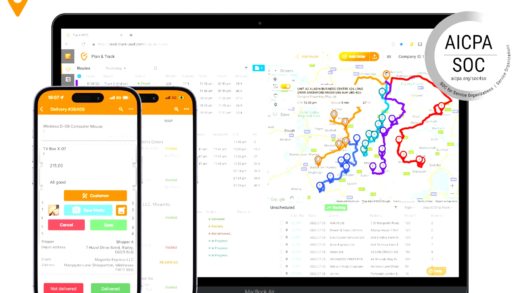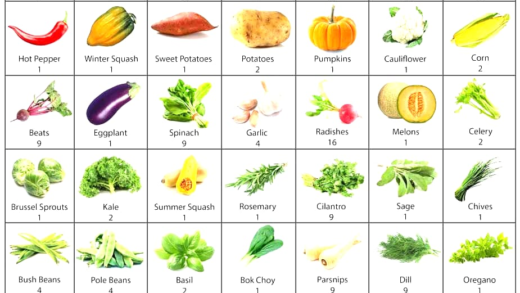The NASCAR penalty system is crucial for maintaining fairness in the sport. It includes various penalties, affects driver standings, and features an appeal process. Recent changes aim to enhance transparency, but fan confusion persists due to complex rules and inconsistent enforcement. Officials play a vital role in enforcing these penalties, and staying informed about them can greatly enhance the fan experience.
What is the NASCAR Penalty System?
The NASCAR penalty system is a structured framework designed to maintain fairness and integrity in motorsport competitions. It ensures that all participants adhere to the established rules and regulations. Violations can lead to various penalties, impacting race outcomes and driver standings.
The system categorizes penalties based on severity and type, which helps to clarify the consequences of infractions. These penalties may include fines, points deductions, suspensions, or even disqualifications from races. Understanding this system is crucial for fans and participants alike, as it can significantly influence race dynamics and team strategies.
Types of NASCAR Penalties Explained
NASCAR penalties come in several forms, each addressing different infractions. Here are the main types:
- Minor Penalties: These typically involve small fines or warnings for slight infractions, such as pit lane violations.
- Major Penalties: More severe infractions, like equipment tampering, can result in substantial fines, points deductions, or suspensions.
- Disqualifications: In cases of serious violations, such as illegal modifications to a vehicle, a driver can be disqualified from a race.
- Encumbrances: These penalties do not directly affect race outcomes but can impact future performance, such as points reductions.
Each type of penalty serves a distinct purpose, ensuring that competitors follow NASCAR’s stringent rules. Understanding these penalties helps fans appreciate the complexities of race strategies and the consequences of driver actions.
How Penalties Affect Driver Standings
Penalties can dramatically alter driver standings in NASCAR competitions. When a driver receives a penalty, it can lead to a loss of valuable points that are crucial for championship standings. For instance, a points deduction could push a driver down several places in the rankings, affecting their eligibility for the playoffs.
Moreover, penalties can impact a team’s overall performance and strategy. Teams must adapt quickly to these changes, often leading to last-minute adjustments in race tactics. A driver’s standing is not just a number; it reflects their consistency and ability to navigate the challenges posed by penalties.
Why Some Penalties Are More Severe
Not all NASCAR penalties are created equal. The severity of a penalty often corresponds to the nature of the infraction. For example, a minor pit lane violation might warrant a small fine, while a major breach, like a serious safety violation, could result in significant fines or disqualification.
The rationale behind harsher penalties is to deter behaviors that could endanger drivers or compromise the integrity of the sport. NASCAR officials carefully evaluate each situation, considering factors like intent and potential risks involved. Understanding why some penalties are more severe helps fans grasp the importance of compliance in maintaining a safe and fair racing environment.
The NASCAR Penalty Appeal Process
The NASCAR penalty system includes a structured appeal process that allows drivers and teams to contest penalties they believe are unjust. This process is crucial for maintaining fairness in the sport. Here’s how it works:
- Notification: After a penalty is issued, the team receives official notification, which outlines the details and reasoning behind the penalty.
- Filing an Appeal: Teams must file an appeal within a specified timeframe, typically 72 hours after receiving the notification. This requires a formal submission to NASCAR.
- Review Process: An independent panel of officials reviews the case. This panel considers evidence presented by both NASCAR and the appealing team.
- Decision: The panel makes a ruling, which can uphold, modify, or overturn the original penalty. The decision is final and binding.
This appeal process provides teams a platform to voice their concerns and ensures that penalties are fairly administered. Understanding this mechanism helps fans grasp the complexities involved in NASCAR governance.
Recent Changes to the NASCAR Penalty System
In recent years, the NASCAR penalty system has undergone several changes aimed at enhancing fairness and transparency. Key modifications include:
- Increased Transparency: NASCAR has improved communication regarding penalties, making information more accessible to fans and teams.
- Adjustments in Penalty Severity: The severity of penalties has been reevaluated, with some infractions now resulting in lighter penalties to encourage competitive racing.
- New Types of Penalties: NASCAR introduced new penalty categories to address emerging issues in the sport, such as violations related to technology and data usage.
- Appeal Process Streamlining: The appeal process has been streamlined for quicker resolutions, allowing teams to receive timely feedback on penalties.
These changes reflect NASCAR’s commitment to adapt to evolving circumstances while maintaining a competitive and fair environment. Awareness of these updates is essential for fans and participants to navigate the complexities of the sport.
Impact of Penalties on Race Strategy
NASCAR penalties can significantly influence race strategy, affecting how teams approach competitions. Here’s how:
- Strategic Adjustments: When a penalty is assessed, teams must quickly adapt their strategies, often leading to changes in pit stop timing, tire management, or fuel strategies.
- Driver Performance: Penalties can alter a driver’s mindset. A driver facing a points deduction may race more aggressively to recover lost positions.
- Team Dynamics: Penalties can strain team relationships, especially if disagreements arise over decisions that led to infractions.
- Long-term Implications: Penalties can impact a team’s overall standings and playoff eligibility, forcing teams to balance short-term gains against long-term goals.
Recognizing the interplay between penalties and race strategy is vital for fans who want to understand the nuances of NASCAR competitions. The ability to adapt and strategize effectively can make or break a team’s season.
Fan Confusion About NASCAR Penalties
The NASCAR penalty system often leaves fans bewildered. This confusion arises from several factors:
- Complexity of Rules: NASCAR has a comprehensive rulebook. Fans may find it challenging to keep track of specific infractions and their corresponding penalties.
- Inconsistent Enforcement: Different officials may interpret rules variably. This inconsistency can lead to confusion about why some penalties are enforced while others are overlooked.
- Rapid Changes: NASCAR frequently updates its rules and penalties. Fans might struggle to stay informed about the latest changes, leading to misunderstandings about current penalties.
- Communication Gaps: Sometimes, NASCAR does not effectively communicate penalty decisions during races. This lack of clarity can lead to speculation and confusion among fans.
Addressing these issues is essential for NASCAR to enhance fan engagement and understanding. Simplifying communication and offering clear explanations for penalties can help bridge the gap between the sport and its audience.
Officials’ Role in Enforcing Penalties
NASCAR officials play a critical role in maintaining the integrity of the sport through the enforcement of the NASCAR penalty system. Their responsibilities include:
- Monitoring Races: Officials closely observe races to ensure compliance with rules. They are responsible for identifying infractions as they occur.
- Issuing Penalties: When an infraction is detected, officials decide on the appropriate penalty based on the severity of the violation.
- Consistency in Enforcement: Officials strive to enforce rules uniformly across all teams and drivers. This consistency is vital for maintaining fair competition.
- Communication: Officials must clearly communicate penalty decisions to teams and fans. This transparency helps prevent confusion and maintains trust in the system.
The effectiveness of officials directly impacts the perception of fairness in NASCAR. Their decisions shape the competitive landscape and influence how fans perceive the sport.
Staying Informed About NASCAR Penalties
For fans looking to stay updated on the NASCAR penalty system, several strategies can help:
- Official NASCAR Website: Regularly check the official NASCAR website for news on penalties and rule changes. This site is a reliable source for accurate and timely information.
- Social Media: Follow NASCAR’s official social media channels. These platforms often provide real-time updates and insights during races.
- News Outlets: Subscribe to NASCAR-focused news outlets or newsletters. These sources frequently cover penalties and their implications on races and standings.
- Fan Forums: Engage in NASCAR fan forums or discussion groups. These platforms can provide insights and interpretations of recent penalties and rule changes from fellow fans.
By utilizing these resources, fans can enhance their understanding of penalties and their impact on the sport. Staying informed not only enriches the viewing experience but also fosters a deeper connection with the NASCAR community.





Comments are closed.